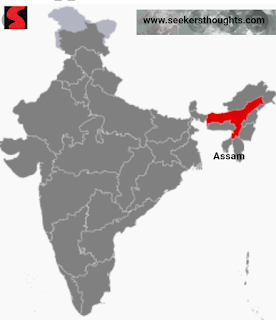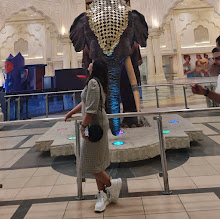The National Redress Centre (NRC) was intended to put an end to illegal immigration. Unfortunately, for many who have been excluded, however, this only serves to revive a lengthy process that has already lasted years.
Such actions also threaten to displace children from their parents and force them into statelessness due to an unwillingness to abide by international law.
What is NRC?
NRC stands for National Register of Citizenship and is a system to document legal residents in India to identify illegal immigrants and deport them. First implemented in Assam in response to massive infiltration from Bangladesh after Pakistan defeated it during World War II, it has now spread throughout India with Prime Minister Modi's Hindu nationalist Bharatiya Janata Party (BJP) touting it as an electoral asset across many states like Haryana and West Bengal, even appealing directly to RSS for similar systems in their states.
Since 1951, the Assam National Register of Citizens has been an ongoing controversy; people unable to provide proof that their families lived in Assam prior to March 24, 1971 being considered illegal aliens. For the update conducted between 2013 and 2014, people had to provide documents such as refugee registration certificates, birth certificates, ration cards, LIC policies, land and tenancy records, citizenship certificates, bank and post office accounts, government employment certificates, educational certificates and court records in order to participate.
At this time, 32.9 crore people provided proof of residence, out of whom 1.76 crore were considered foreigners. On August 31, 2021, the NRC was finally published with 2.42 crore people being listed; those not included have the opportunity to file an appeal with NRC Seva Kendras by 31 December, 2022.
However, this exercise has been marred by corruption allegations, with former NRC coordinator Prateek Hajela facing allegations of money laundering, false identification and illegal smuggling of migrants. A report presented to the state assembly by Comptroller and Auditor General of India (CAG) on Friday also alleged irregularities and financial anomalies in this process; additionally Assam Public Works (APW), which requested this update through court petition, has filed three cases of corruption and irregularity against Hajela.
Why is it only in Assam?
Assam is a state bordered by Bangladesh and immigration has long been an issue in this region. The National Register of Citizens update was intended as a safeguard against illegal immigrants while protecting cultural and linguistic identity of Assam; however, this has become more of a political battleground than anything else and has caused much anxiety amongst Assamese citizens.
Thousands of people were left off of the National Registration Council list, which includes only those alive on March 24, 1971 who have had any record on electoral rolls during the past six years. Citizens can apply to have their names added back onto this list until August 30; otherwise they will not be labeled foreigners or deported, though they cannot legally work or own land in Assam and could face civil and criminal penalties for breaking laws regarding illegal migrants.
But the process has been marred by allegations of bribery and corruption. A new book by Indian journalist Abhishek Saha, No Land's People, documents how bureaucratic exercise was used as an instrument of resentment against migrants from Bangladesh; many local residents felt their jobs and property were being taken by outsiders and saw NRC as an effective way of identifying and deporting them.
While most Muslims in Assam reluctantly supported the National Rifle Corps (NRC), believing it would put an end to decades of anti-immigrant witch-hunt, now many worry it could be used against them due to rising Hindu nationalism in India and Islamophobia worldwide.
Sarma, an Assam Civil Service officer from 1989's batch and currently working in Assam's Foreigners Tribunals (FTs), has long voiced his strong objections to the National Records Centre (NRC). Reportedly he told his successors not to rely on NRC when adjudicating cases before these quasi-judicial bodies that decide matters of citizenship status.
Recently, he issued a memo to all Financial Times members advising them not to use the National Residence Certification when assessing whether someone is eligible to become a citizen or not. According to him, many instances had demonstrated how incorrect and misleading its judgment has been.
What will change?
The National Registration Centre process was initiated by the Supreme Court following a petition filed by indigenous groups in Assam. Its purpose was to safeguard Assamese culture and identity against an onslaught of illegal migrants from Bangladesh; but when published, in 2018's final draft excluded over four million residents who ordinarily resided within its boundaries; this breached international principles of nationality and human rights.
Assam's long border with Bangladesh has long been a source of friction and anxiety among its local population, who fear mass immigration eroding their culture and demographic profile. The National Redress Council was seen by many as one of the first steps toward alleviating such concerns, garnering widespread praise and applause as evidenced by their overwhelming success.
However, the NRC update has been marred with multiple errors and controversies that have undermined its intended purpose. Perhaps most gravely was 19 lakh residents not making the final list released in August due to miscalculation caused by insufficient name verification - including people not born in Assam or lacking proof of citizenship who could not be found on official documents or who lacked proof.
Another major issue involved the lack of rejection slips issued to those not included on the NRC list, despite orders from the Registrar General of India for them to do so by state NRC coordinators. Without these slips in their possession, individuals who were excluded were left in limbo, making it harder for them to challenge their exclusion through Foreigners Tribunals (FT) later on.
Sarbananda Sonowal recently indicated legislative steps as a possible response to issues surrounding the National Register of Citizens (NRC), yet did not detail specific plans. This has sparked speculations that he could revive a controversial Citizenship (Amendment) Bill introduced in Parliament early this year that was later shelved due to protests by local organizations and Asom Gana Parishad's partner organization the BJP; its aim is to grant Indian citizenship to Hindus from Bangladesh who entered before March 24, 1971 and claim Indian citizenship under certain conditions.
What is the controversy all about?
Assam's National Register of Citizens (NRC) process has caused widespread anger and distress among Bengali Hindu families who have been declared foreigners, with scores committing suicide as a result of being fearful that losing citizenship or detention might happen as a result of being declared aliens. Since its implementation began in 2015, scores of people have attempted or completed suicide due to NRC fears. Some residents were also forced to vacate their homes after being commandeered as National Reconciliation Council detention centers by the government. Many detainees are separated from their children as an act of emotional torture, according to rights activists. Living conditions at detention centres can often be extremely crowded; one report describes an overcrowded room containing only 40 beds but 120 people. Harsh Mander visited two detention centres and described their situations as both "grave and extensive."
Initially, the BJP took credit for creating the National Registration Council (NRC), but has now come out against it as error-riddled, alleging that lakhs of names have been excluded. Partly this may be because Bengali Hindus form an important vote bank for them - which means linking their names publicly with this list could be risky.
However, the BJP government has accused Congress of politicizing this issue and is trying to create an "ethnic cleansing" situation by targeting Muslims in Assam. Furthermore, NRC has already expressed fear over possible witch hunt against Muslim-dominated linguistic minorities living within Assam's boundaries.
Comptroller and Auditor General of India's (CAG) report detailing large-scale anomalies and bureaucratic lapses in the National Register of Citizens (NRC), has created further controversy surrounding Assam's National Register of Citizens (NRC), with allegations being levied against former coordinator Prateek Hajela; however, these accusations have been refuted by him, and an appeal filed in Supreme Court against them by him as well. Regardless, controversy around Assam's National Register of Citizens could result in serious consequences both locally and nationwide unless action are taken by Centre against this issue - so, now is time for centre to take a firm stand against it all!













No comments:
Post a Comment